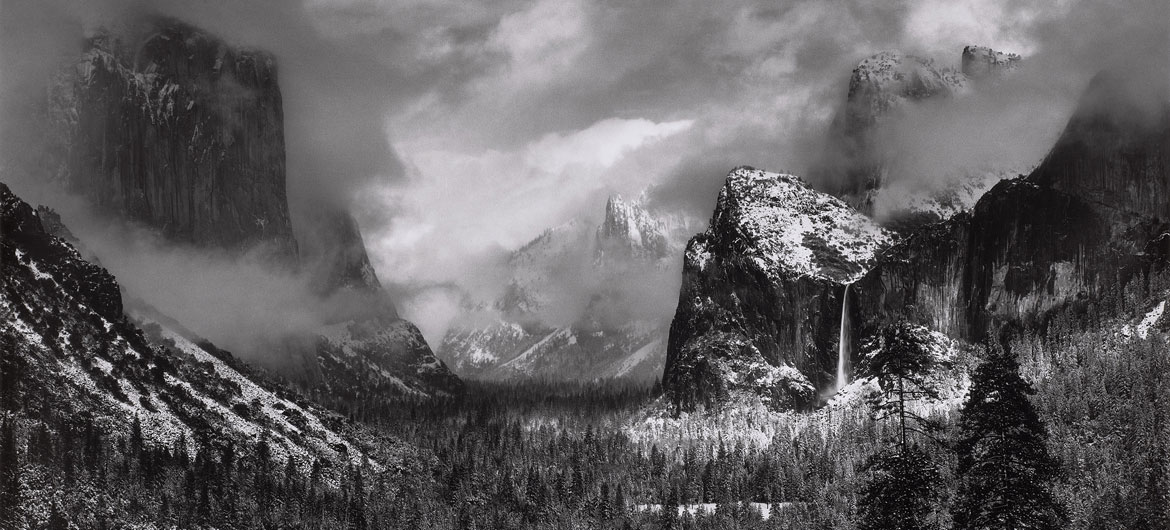In April 1927, 25-year-old photographer Ansel Adams and a handful of friends climbed toward Half Dome at Yosemite National Park in California. The iconic granite peak, round except for one sheer vertical face, rises nearly 5,000 feet above the valley floor.
They lugged Adams’s bulky view camera, wooden tripod and 12 glass-plate negatives up a rocky cleft scoured by a chilly wind, while Virginia Best (who married Adams the following January) filmed their adventure. The group watched a waterfall roaring down into the canyon. They crossed patches of snow and ice and sheer rock until Adams reached the Diving Board, a granite shelf on the west shoulder of Half Dome, overhanging the valley below. By the time, Adams got there, he had used all but two of the negatives.
Adams lined up his photograph in the ground glass on the back of the camera, where it appeared upside-down and backwards. “I saw the photograph as a brooding form, with deep shadows and a distant sharp white peak against a dark sky,” Adams wrote in his 1983 book “Examples: The Making of 40 Photographs.”
He later attested, before he took the photo, he was trying for the first time to visualize exactly what he was aiming for. “The ability to anticipate—to see in the mind’s eye, so to speak—the final print while viewing the subject makes it possible to apply the numerous controls of the craft in precise ways that contribute to achieving the desired result.”
He attached a red filter to bring out the deep shadows and contrasts. He exposed the negative for five long seconds to capture the sheer, forbidding, steely black rock face—in his words, “the majesty of the sculptural shape of the Dome in the solemn effect of half sunlight and half shadow.”
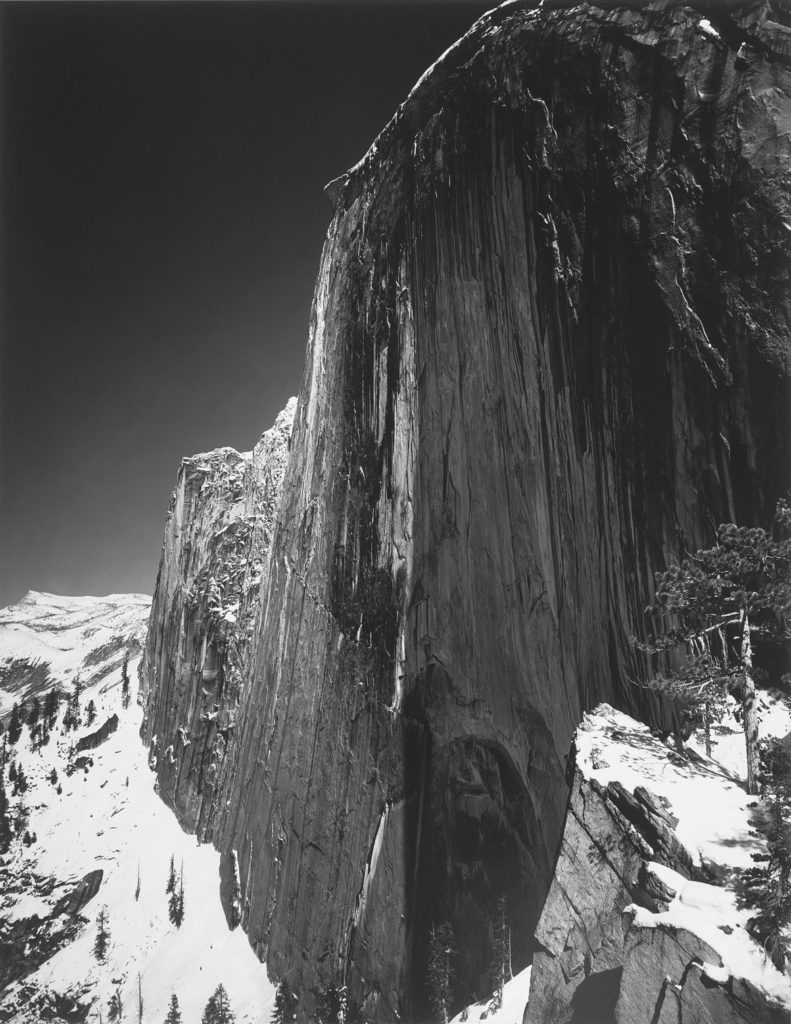
The resulting photo is one of five that open the exhibition “Ansel Adams in Our Time” at Boston’s Museum of Fine Arts from Dec. 13, 2018, to Feb. 24, 2019. Nearby is Adams’s photo from a decade later of “Clearing Winter Storm, Yosemite National Park,” of majestic clouds raked by the snowy valley’s peaks. The show ranges through photos of the moon rising over a New Mexico cemetery and the shimmering Snake River winding toward Wyoming’s Grand Tetons and other classic photos that have come to define the places.
“We start in Yosemite, which was his home place, which really was his touchstone throughout his life,” says MFA curator Karen Haas, who organized the show. She aims to put Adams in context. “Adams has always been one of those artists who has been treated as a singular figure, came out of nowhere, influenced by no one.” Haas aims to situate Adams between the 19th century surveyor photographers who preceded him and the 20th and 21st century conceptual photographers who followed, interrogating and deconstructing what had come before.
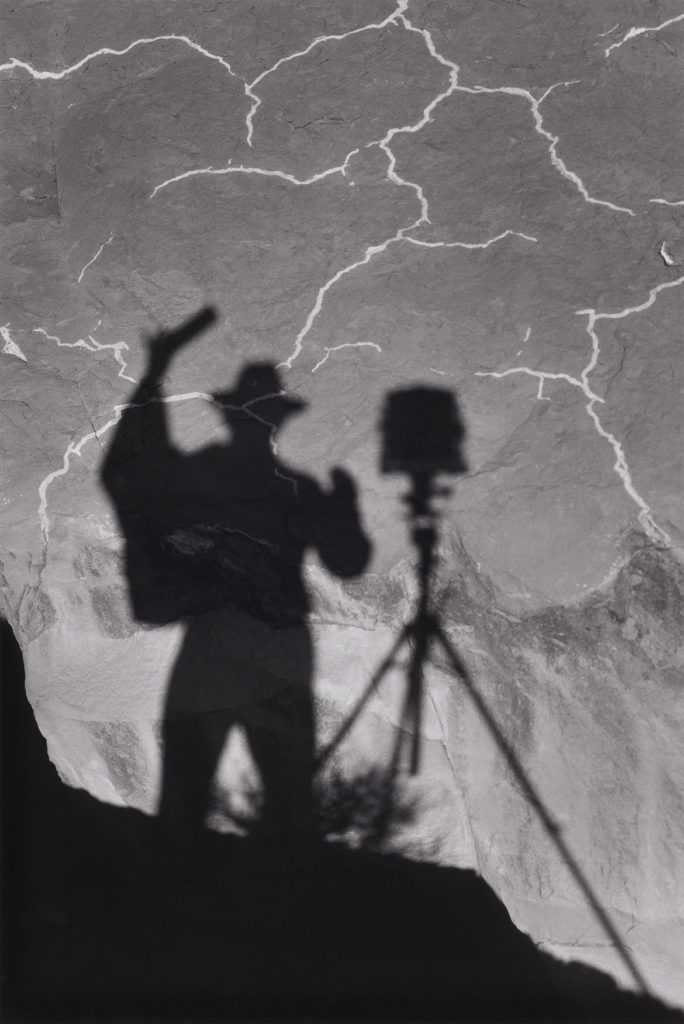
If this is the kind of coverage of arts, cultures and activisms you appreciate, please support Wonderland by contributing to Wonderland on Patreon. And sign up for our free, weekly newsletter so that you don’t miss any of our reporting.
‘I Am Not Afraid Of Beauty’
The first recorded visit to Yosemite Valley by non-indigenous people was an 1851 patrol by the Mariposa Battalion, a state-sponsored militia sent to eradicate indigenous people from the area. The 19th century photographers who followed were often surveyors—military analysts figuring out the lay of the land so they could help eradicate native peoples or real estate prospectors looking for the best places to lay down railroad tracks or throw up buildings.
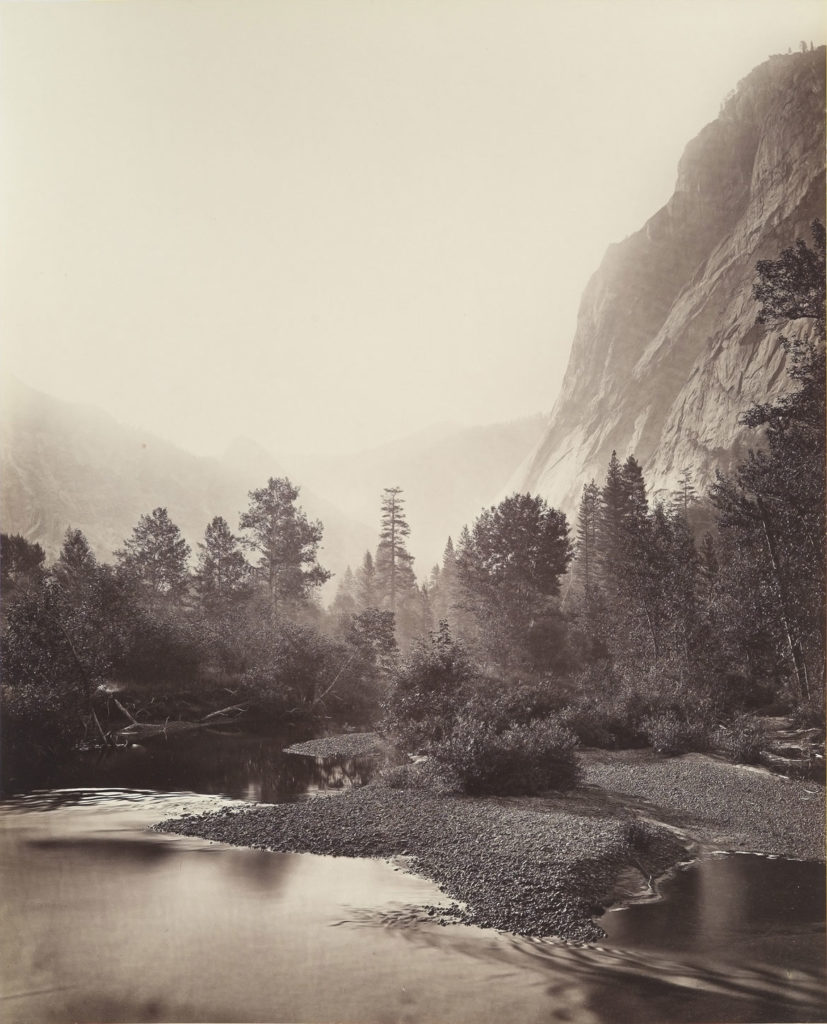
Carleton Watkins’s early 1860s photos of Yosemite Falls, Haas says, “convinced [President Abraham] Lincoln and Congress, at the height of the Civil War, to set aside Yosemite as protected land” in 1864. But Timothy O’Sullivan was the official photographer of the 1873 Wheeler Survey of Arizona and New Mexico territories by the U.S. War Department “to assist in [military] operations against the tribes living there,” the museum reports. Eadweard Muybridge photographed a river snaking through Yosemite’s sharp rocky peaks and deep valley in 1867 and 1872. George Fiske photographed people at Yosemite.
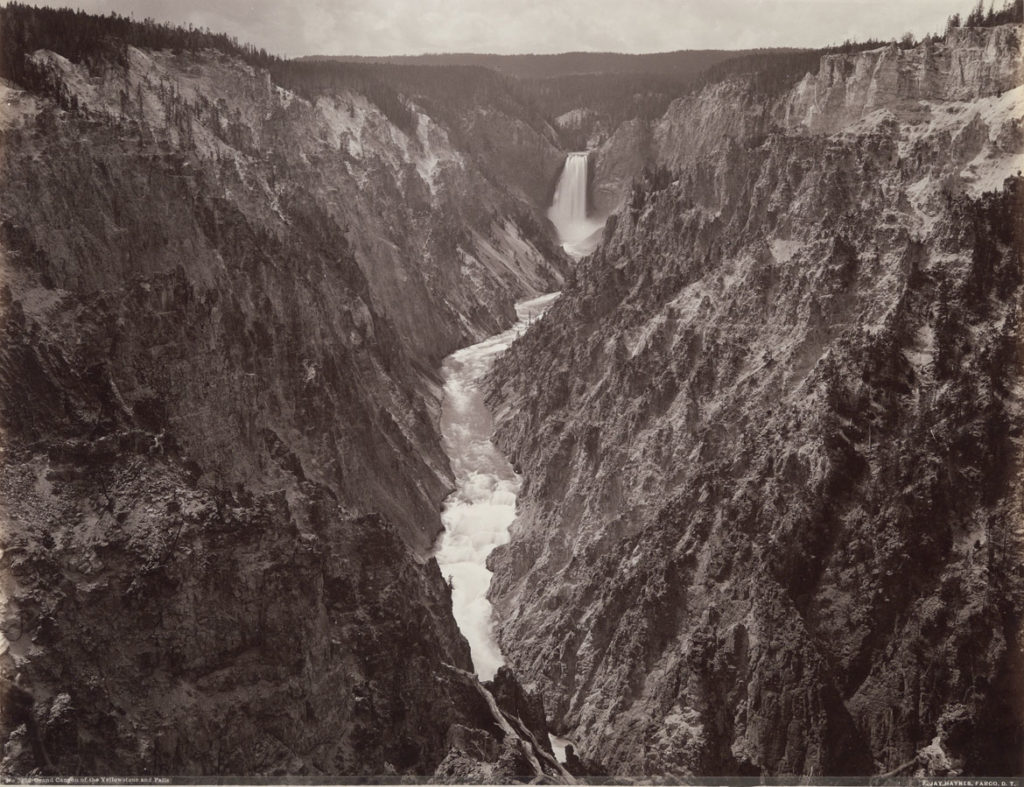
Adams studied the photos of these predecessors (one photo here seems a copy or quotation of O’Sullivan) and was connected to this pioneer legacy through his own family. As Mary Street Alinder, Adams’s assistant from 1979 until his death in 1984, wrote in her 1996 biography “Ansel Adams,” his grandfather left Maine for San Francisco in 1850, attempting to strike it rich in the Gold Rush. He was unsuccessful with that, but launched a wholesale grocery in Sacramento that supplied other would-be miners. He sold that, returned to Maine to get hitched to a wealthy young widow, settled in San Francisco and built a lumber business chopping down virgin redwood tracts. He owned land, mills, a fleet of ships, and built a major San Francisco streetcar line.

Ansel Adams (1902-1984) made his first visit to Yosemite in June 1916. He had become entranced with Yosemite and the Sierras from seeing a Southern Pacific Railroad display at San Francisco’s Panama Pacific International Exhibition in 1915 and reading up on the place. The 14-year-old traveled two days by train, about 175 miles due east from his family’s home in San Francisco to Yosemite. To record the trip, his family gave him his first camera.
Adams returned to Yosemite in 1917, 1918 and 1919. During the winter of 1917 to 1918, he worked for a San Francisco photo finisher and began to learn darkroom techniques. He photographed during all his visits to Yosemite, developing a Pictorialist style—grand, often mythological and artfully blurred photography that aimed to attract esteem for the medium by resembling Western painting.
Adams’s 1927 photo of Half Dome showed him in transition. It was the standout among the portfolio he issued that year as “Parmelian Prints of the High Sierras.” In these early photos, his film bleached out the skies. But he soon switched to more sensitive films that allowed him to capture the drama of clouds, so that “the sky becomes a more and more important player,” Haas says.
You can see this in his 1932 photo “The Golden Gate Before the Bridge,” depicting the highlands where the bay meets the Pacific Ocean before construction of the suspension bridge began the following year. Adams situates the horizon low in the photo, devoting two-thirds to billowing clouds. “What he’s doing here is reveling in what his large camera can capture,” Haas says.
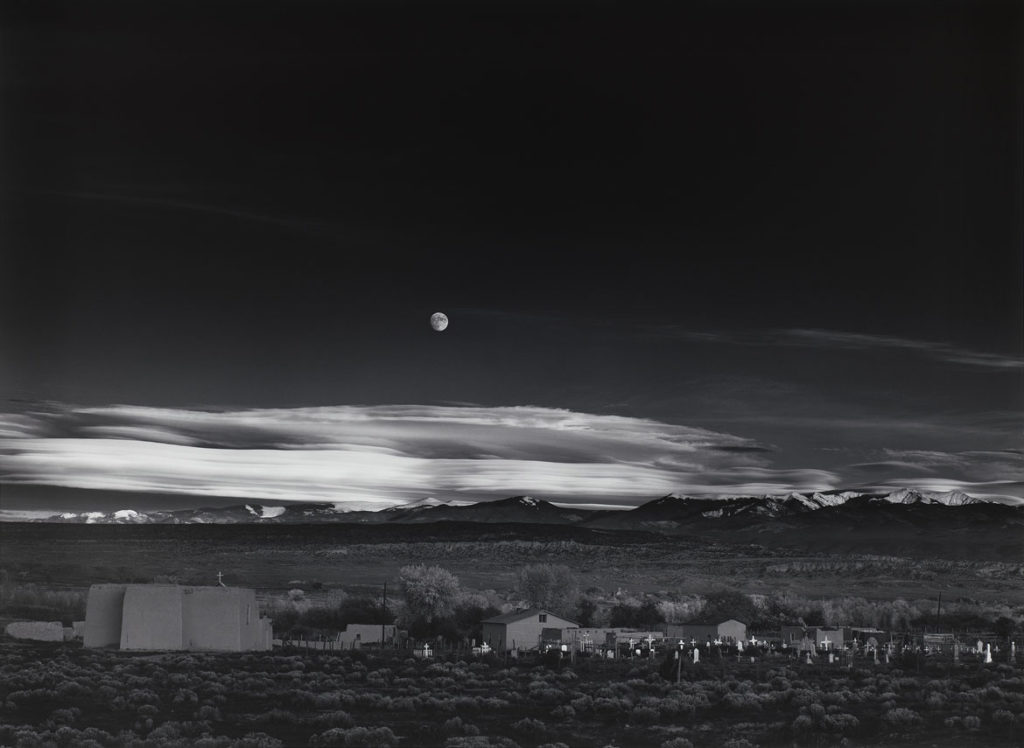
In 1932, Adams exhibited the photo at San Francisco’s De Young Museum as part of a show of the Bay Area camera club known as Group f.64 that had formed that year. Members included Adams, Imogen Cunningham, Edward Weston, Sonya Noskowiak, Willard Van Dyke, and John Paul Edwards. The group’s name referred to f/64, the smallest aperture in large-format view cameras then, which put as much of the image as possible in crisp focus. They rejected the artfully blurred, musty, mystical trappings of Pictorialism, in favor of a modernist formalism that emphasized the technical distinctiveness of photography.
“The group will show no work at any time that does not conform its standards of pure photography. Pure photography is defined as possessing no qualities of technique, composition or idea derivative of any other art form,” read a group statement shown on the walls of the De Young during the exhibition.
Weston and Adams, in particular, were proponents of an apolitical modernism fueled by beautiful formal technique. “Photography, when it tells the truth, is magnificent, but it can be twisted, deformed, restricted, and compromised more than any other art. Because what is before the lens always has the illusion of reality; but what is selected and put before the lens can be as false as any totalitarian lie,” Adams wrote his friend, the great San Francisco social documentary photographer Dorotha Lange, in 1962. “…I resent being manipulated into a politico-social formula of thought and existence. I resent the implications that unless photography has a politico-social function it is not of value to people at large.” He argued for beauty in photography: “I am not afraid of beauty, of poetry, of sentiment. I think it just as important to bring to people evidence of the beauty of the world of nature and of man as it is to give them a document of ugliness, squalor and despair.”
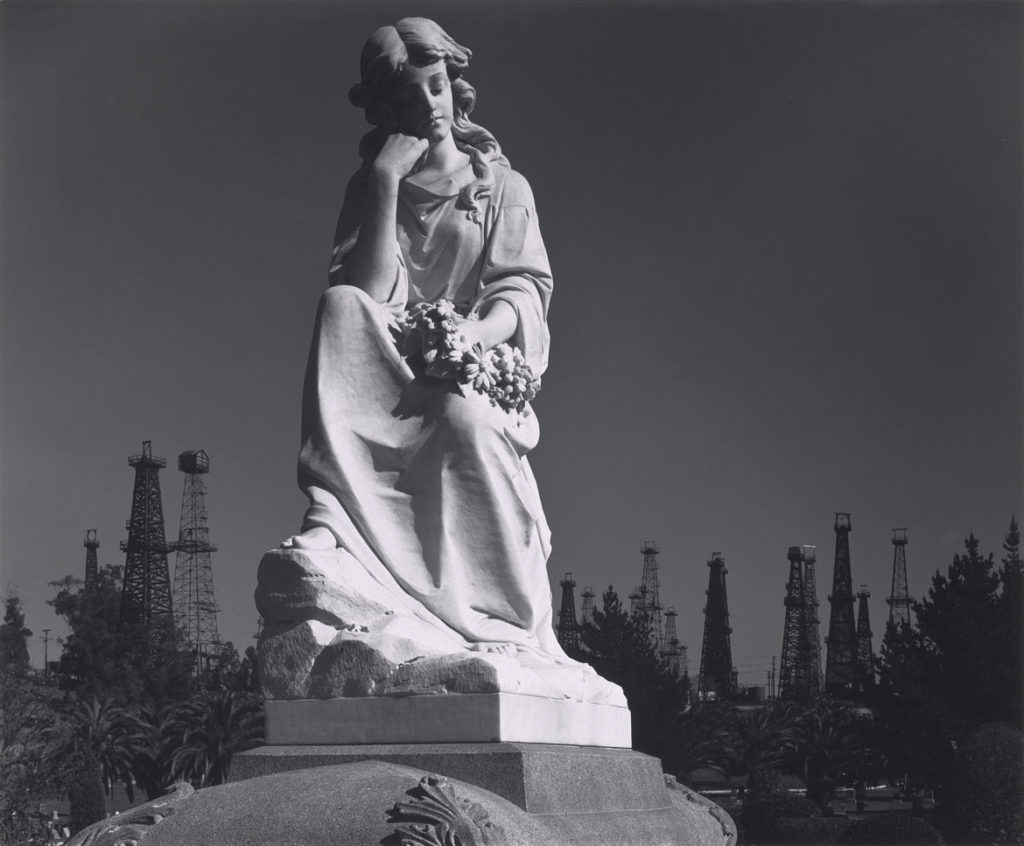
“Ansel Adams in Our Time” reminds that Adams photographed urban detritus, documented Indigenous peoples, the tangle of a highway interchange. But what we come for are his glorious photos of seemingly untouched western American landscapes.
Adams returned again and again to Yosemite to photograph its forests and rivers and peaks in all seasons and all moods. Adams set out in the 1940s to cross the country photographing the National Parks—at first with federal funding and, after World War II dried that money up, supported by a 1946 Guggenheim grant. The MFA features his ravishing photos of Yellowstone’s Old Faithful geyser, the Grand Tetons’ Snake River, Pueblo dwellings at Colorado’s Mesa Verde National Park, ferns in Hawaii, the Grand Canyon, Alaska’s Mount McKinley, an autumn forest at Tennessee’s Great Smoky Mountains National Park. He published the book “My Camera in the National Parks” in 1950.
“No artist has pictured the magnificence of the western states more eloquently,” Time magazine declared in 1951.
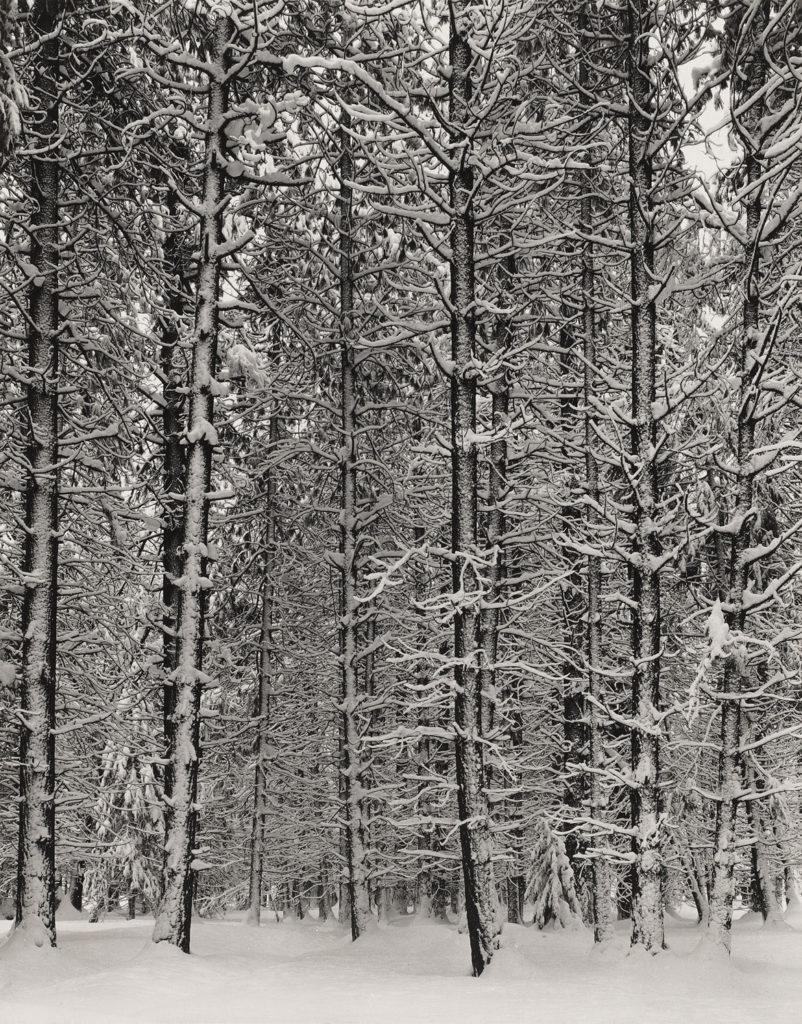
Looking at Adams’s photo “Pine Forest in the Snow, Yosemite National Park” from around 1932, Haas says, “Adams had this incredible delicate touch. He did those symphonic views, but he also did these close views.”
Part of Adams success was that he was one of the best connected artists of his time—from the pioneering Bay Area photographers to Alfred Stieglitz, the photographer who ran a history-defining gallery in New York. (The exhibition’s effort to put Adams in context skips over his contemporaries.) When New York’s Museum of Modern Art launched a department of photography Adams was named vice-chair of the department advisory board and helped the department present its first show in December 1940.
“In the 1940s, he’s already a very successful photographer, but he still has to make a living,” Haas says. Ansel and Virginia Adams published their “Illustrated Guide to Yosemite Valley” in 1940, updating and republishing it through 1963. Though Adams is best known for his images of the wilds of the American West, the exhibition includes a photo he took on a commission to document the U.S. Potash Company mine in 1941, run by his friend Horace Albright, former director of the National Park Service. Adams’s photos were featured in advertisements from Kodak promoting photography and tourism. His photos appeared in annual reports from Bank of America, Pacific Gas and Electric, Polaroid Corporation and the Curry Company, which ran concessions at Yosemite.
Though Adams generally objected to making socially-engaged art, he used his photos and his esteem as a photographer to promote environmental causes. In January 1936, the Sierra Club sent Adams to congressional hearings in Washington, D.C., to prevent Los Angeles from turning Kings Canyon into a drinking water reservoir. Adams subsequently sent a copy of his 1938 book “Sierra Nevada, the John Muir Trail” to U.S. Secretary of the Interior Harold Ickes, who presented it to President Franklin Roosevelt, who made the area a national park in 1940.

When an old Sierra Club friend, Ralph Merritt, became director of the Manzanar Relocation Camp for Japanese-Americans imprisoned during World War II, he invited Adams to come document the facility in October 1943 and again in spring 1944. The MFA features Adams’s 1944 photo “Mount Williamson from Manzanar, Sierra Nevada, California,” looking across a boulder field to sunlight glowing on the mountain.
“The reason he was in these places, this otherwise arid and empty landscapes, was this was during World War II and he was documenting the Japanese internment camp,” Haas says. Adams published a book “Born Free and Equal: The Story of Loyal Japanese-Americans” of his Manzanar work in late 1944. The photos were show at New York’s Museum of Modern Art in 1944—with some of Adams’s descriptions rewritten by the museum because they were deemed too political, namely too pro-Japanese-American.
Adams’s activism continued to the very end of his life. In 1983, Adams was invited to meet with President Ronald Reagan in the White House. Despite Adams’s long opposition to Reagan, he went because he felt it was a chance to raise environmental concerns with a top leader who “had not met with even one major environmental leader” since becoming president, Adams wrote in his 1985 biography. Afterward, Adams felt the conversation ended up being fruitless.
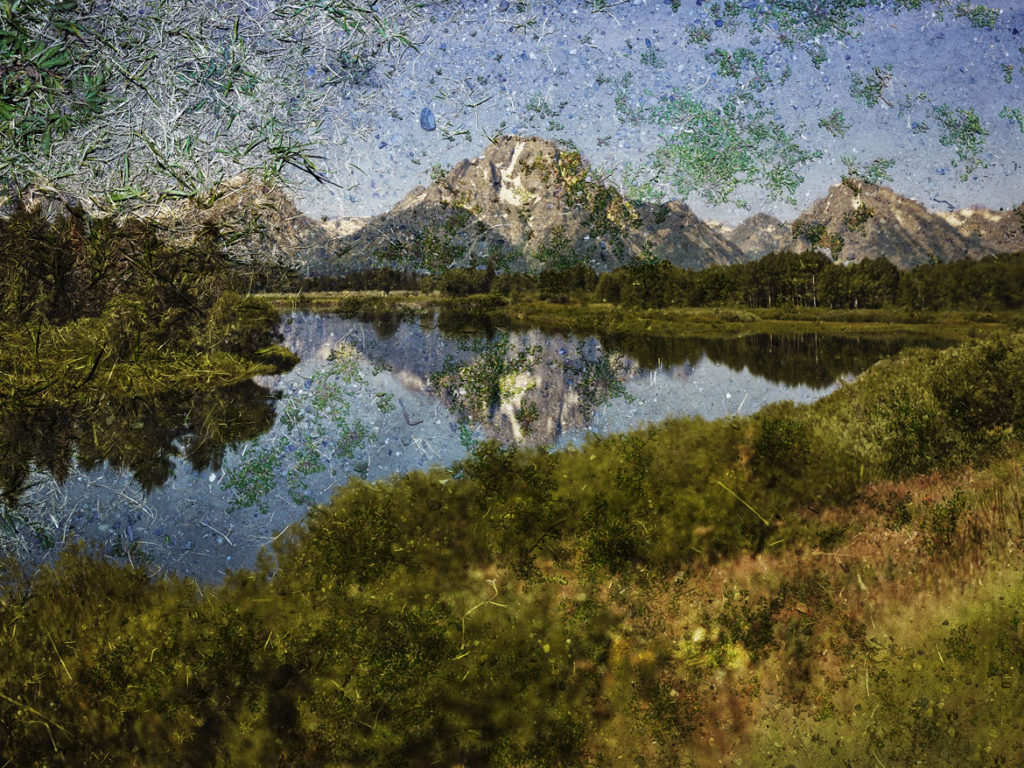
‘Make-believe’
“As long as people have been in the American West, they have found its barren desert landscapes to be ideal for dumping garbage and forgetting,” David Emitt Adams—who prints his landscape photos on old, rusty tin cans, metal barrels and fuel cans—has said. “I was born in Yuma, Arizona, in 1980 and I have never known this landscape without the forgotten debris of urban sprawl. Today, the notion of land untouched by the hand of man is so foreign it might as well be make-believe.”
Adams might have said nearly the same thing. In his posthumous 1985 autobiography, he complained of people exploiting the resources of the earth “at the expense of the future.” He was an environmentalist and an activist, and he used his photos to promote his causes. But he differed from the contemporary photographers Haas pairs him with in “Ansel Adams in Our Time” because he insisted that the photos themselves were not about causes, that they were about the grandeur of nature.
In 1962, Adams wrote his friend Dorotha Lange, the great Depression documentary photographer, that “You happen to be one of the very few who has brought enough deeply human emotion into your work to make it bearable for me. I wish you would try to think of yourself as a fine artist—which you are; that is a damn sight more important to the world than being merely an extension of a sociological movement.”
Adams was also a technician, publishing several books about his process, but insisted it was all in the service of emotion. In Adams’s black and white photos the American West is an awesome, pristine, undeveloped Eden, empty of people and even animals. He wasn’t averse to erasing a road from a photo if it marred the natural look he was aiming for.
“Ansel Adams in Our Time” is a gorgeous survey of Adams’s work, featuring some of the greatest and most beloved photos of this country. But the pictures included by Emitt and other living photographers serve as a rebuttal.
These photographers following in Adams’s footsteps insist on pointing out Adams’s artifice, on pointing out what Adams left out in his mythmaking. They want to make photos reckoning with the American West as it actually is—teeming with people and polluting industry and government installations. They want to make photos that are persuasive photos, even activist photos addressing environmental and social ills. They want to make photos that foreground their techniques.
On the formalist end, “Ansel Adams in Our Time” offers Matthew Brandt’s 2009 screenprints of Yosemite rendered in mole sauce, ketchup and mustard. Chris McCaw’s 2013 “Sunburned GSP#683 (San Francisco Bay, Sunrise in 12 Negatives)” feature just a circle burned into each print by the fire of the rising sun. Haas says it’s an exemplar of photographers “now giving themselves over to chance and serendipity.”
Abelardo Morell, who long taught at Massachusetts College of Art and Design, records Yellowstone’s Old Faithful geyser and the Grand Tetons’ Snake River projected onto the ground via a camera obscura he set up inside a tent at the sites. “What you’re seeing here are the pine needles and the parking lot,” Haas says. “They become very painterly and very mysterious.”
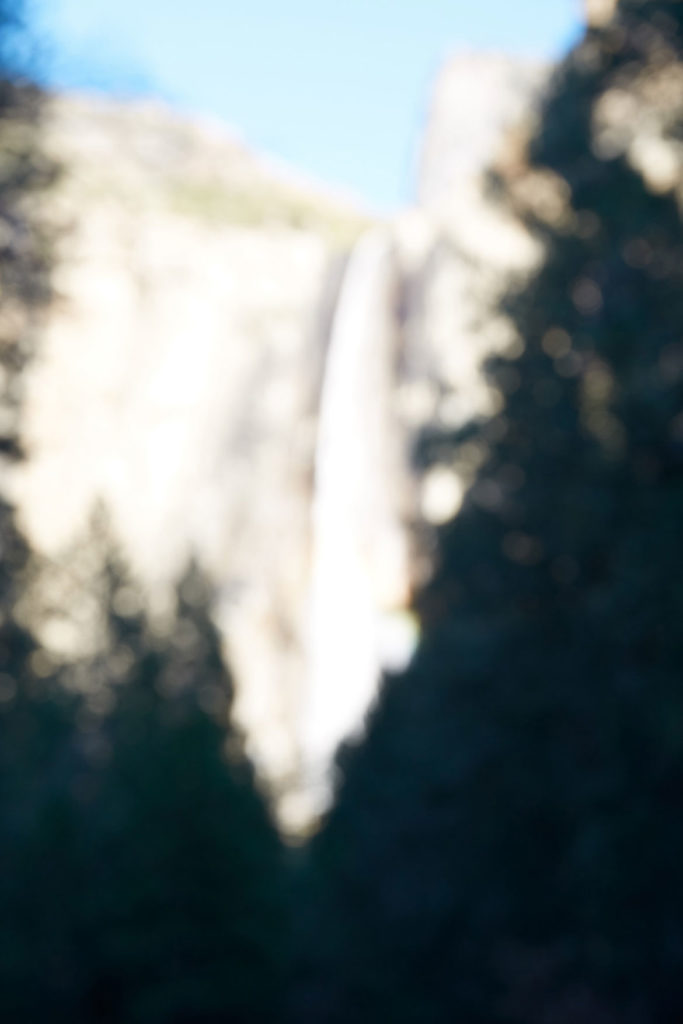
In Catherine Opie’s very blurry 2015 photos of Yosemite, Haas says the photographer is asserting that “as a woman, as a feminist, as a lesbian, she has a right to this landscape. … She’s taken what he’s [Adams] has done in sharp black and white and turned it into soft and luscious and melting color.”
And then there’s Mark Klett and Byron Wolfe’s 2003 “Panorama showing Carleton Watkins’s camera position for Yosemite Falls and Merced River.” They’re historian stalker copycats, endeavoring to locate the exact place where the earlier photographers stood and to rephotograph the scene from that spot. In this case, they produced an array of 15 photos showing a rafting group paddling on the left and tourists on the right hiking dirt trails through tall grass toward the falls. Watkins’s view is pasted in the middle. It aims to reveal the careful framing of the originals, Haas says, “reminding us just how artificial a concept photography is.”
Ansel Adams’s “depopulated scenes suggest that the landscape does best without our presence, and that wilderness is an entity defined by our absence,” Klett has said. “However, anyone who has visited the side of one of Adams’s photographs knows that the romance of his landscapes is often best experienced in the photographs themselves. The reality of the place is quite different. … The natural beauty of the land is there to be seen, but you will not see it alone.”
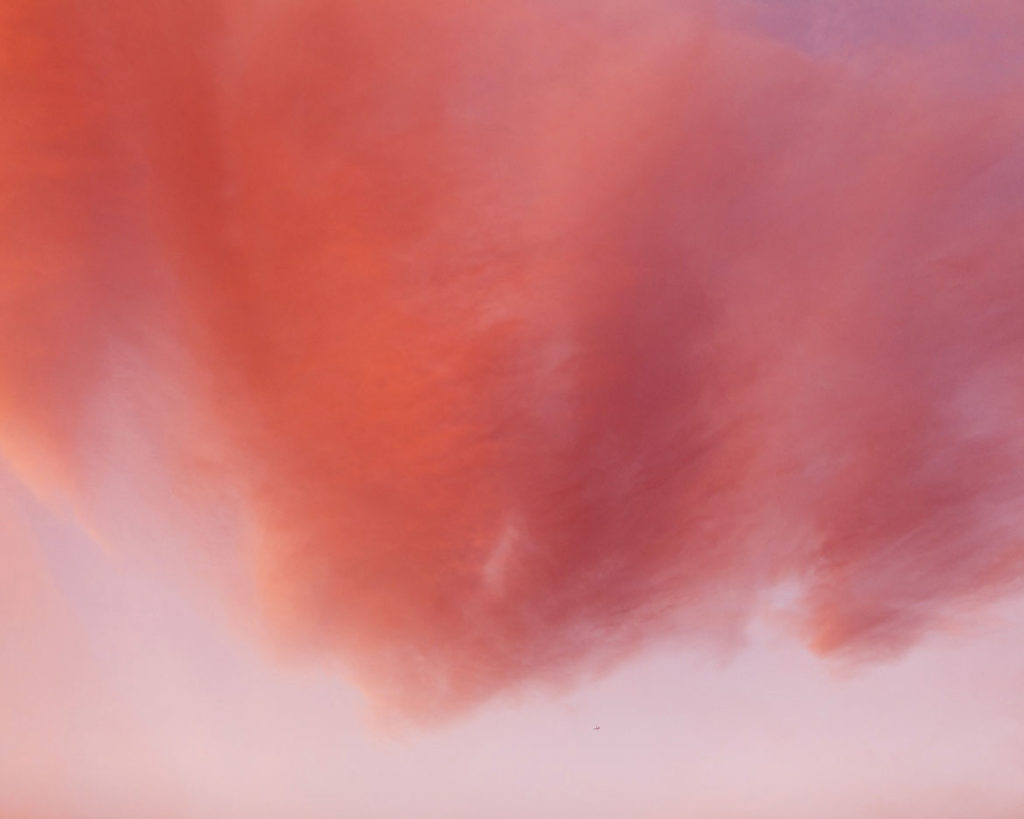
Haas pairs Adams’s photos from the World War II Japanese internment camp at Manzanar with Somerville photographer Stephen Tourlentes’s 2000 photo of a prison glowing off in the distance, between two hills in a snowy Wyoming desert and Colorado. “We incarcerate more people than practically any country in the world,” Tourlentes says. “I hope that these photographs enhance conversation about something just beyond the image itself.”
In Trevor Paglen’s 2000s photos of a reaper drone as a speck among sunset red clouds and a surveillance satellite over the Sierra Nevada Mountains, Haas says Plagen investigates “the unseen areas where our government is operating”
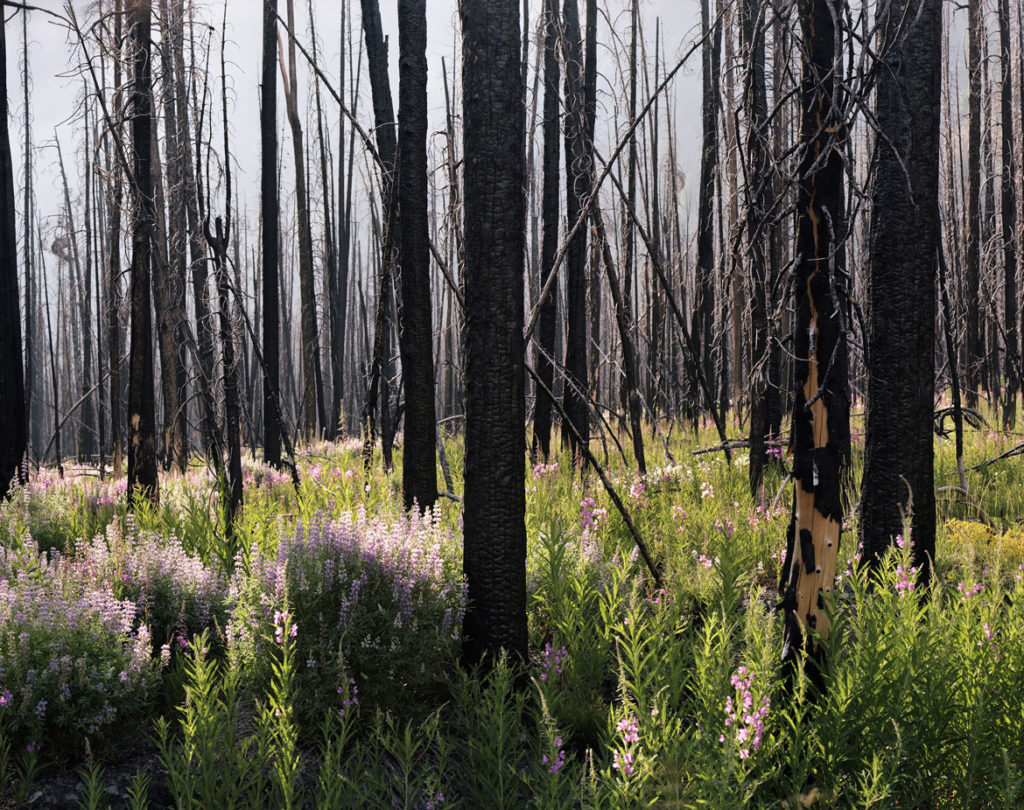
Mark Ruwedel’s 1990 photos reveal “cuts through the landscape … that were made for the transcontinental railroad,” Haas says. Laura McPhee’s 2008 photos show new growth in a charred Idaho forest three years after a fire. “It has to do with paradox in the landscape and land management,” the Brookline photographer says. “It’s about unintended consequences.” Years of forestry management suppressing fires has left “so much fuel on the ground that it only takes a few sparks” to set off a conflagration, she says. “This will happen more and more.”

Mitch Epstein’s 2007 photos show oil drilling, wind turbines and a golf course in California. Lucas Foglia’s 2016 photo depicts “Beach Restoration after El Nino waves.” Haas says Foglia believes “we are complicit, we are the reason so much of this is happening. We can shore up the beaches after El Nino waves for only so long.”
If this is the kind of coverage of arts, cultures and activisms you appreciate, please support Wonderland by contributing to Wonderland on Patreon. And sign up for our free, weekly newsletter so that you don’t miss any of our reporting.
